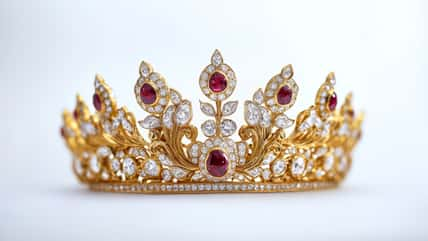Often Considered The World’s First Computer Programmer, She Is Credited With Founding Scientific Computing Despite Working Over 100 Years Before The Modern Computer Was Even Invented

One of the most fascinating women in history was Ada Byron, Countess of Lovelace, simply known as Ada Lovelace.
She’s credited for founding scientific computing and is often considered the world’s first computer programmer, even though she worked over a hundred years before the modern computer was invented.
Ada was born in England in 1815. Her father, Lord Byron, was one of Britain’s greatest poets, and her mother, Anne Isabelle Milbanke, decided to separate from him not long after Ada was born.
Ada’s mother didn’t want her to grow up and become a poet like her father, so she made sure she received an education with a strong emphasis on mathematics and music. By the time the late 1820s rolled around, Ada showed much interest in math and science.
When Ada was 17, she was introduced to Charles Babbage, who was a professor of mathematics at Cambridge. He was considered the ‘father of the computer,’ and despite being over 20 years older than Ava, the two began corresponding about all sorts of scholarly subjects, from math to logic.
In 1835, Ada married William King, and after he inherited a title in 1838, they became the Earl and Countess of Lovelace. They had three children together. Despite becoming a noblewoman, wife, and mother, Ada continued to correspond with Charles for two decades.
In 1837, Charles began envisioning and working on his most popular invention, a calculating machine called an Analytical Engine. The machine could carry out different kinds of mathematical operations, which was very impressive at the time.
In 1842, Charles had Italian mathematician Louis Menebrea write a description of the Analytical Engine and then asked Ada to translate his notes into English.
Not only did she do that, but she also wrote a series of her own notes over nine months, which were three times longer than the translation. In those notes, she corrected some of Charles’ miscalculations and ended up writing a computer algorithm.

LStockStudio – stock.adobe.com – illustrative purposes only, not the actual person
Ada’s notes were published and made her very notable. She became better at realizing the potential and possibilities of Charles’s Analytical Engine, finding that it didn’t only have to work with numbers.
Although the Analytical Engine was never actually built during her lifetime, her notes were nothing short of extraordinary. She began calling herself an analyst and metaphysician.
Sadly, Ada lived a fairly short life and passed away at age 36 in 1852 due to cancer.
Have you ever heard of Ada Lovelace before?
Sign up for Chip Chick’s newsletter and get stories like this delivered to your inbox.
More About:Chicks We Love





